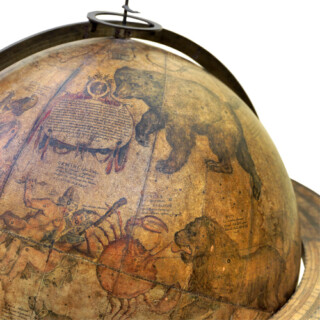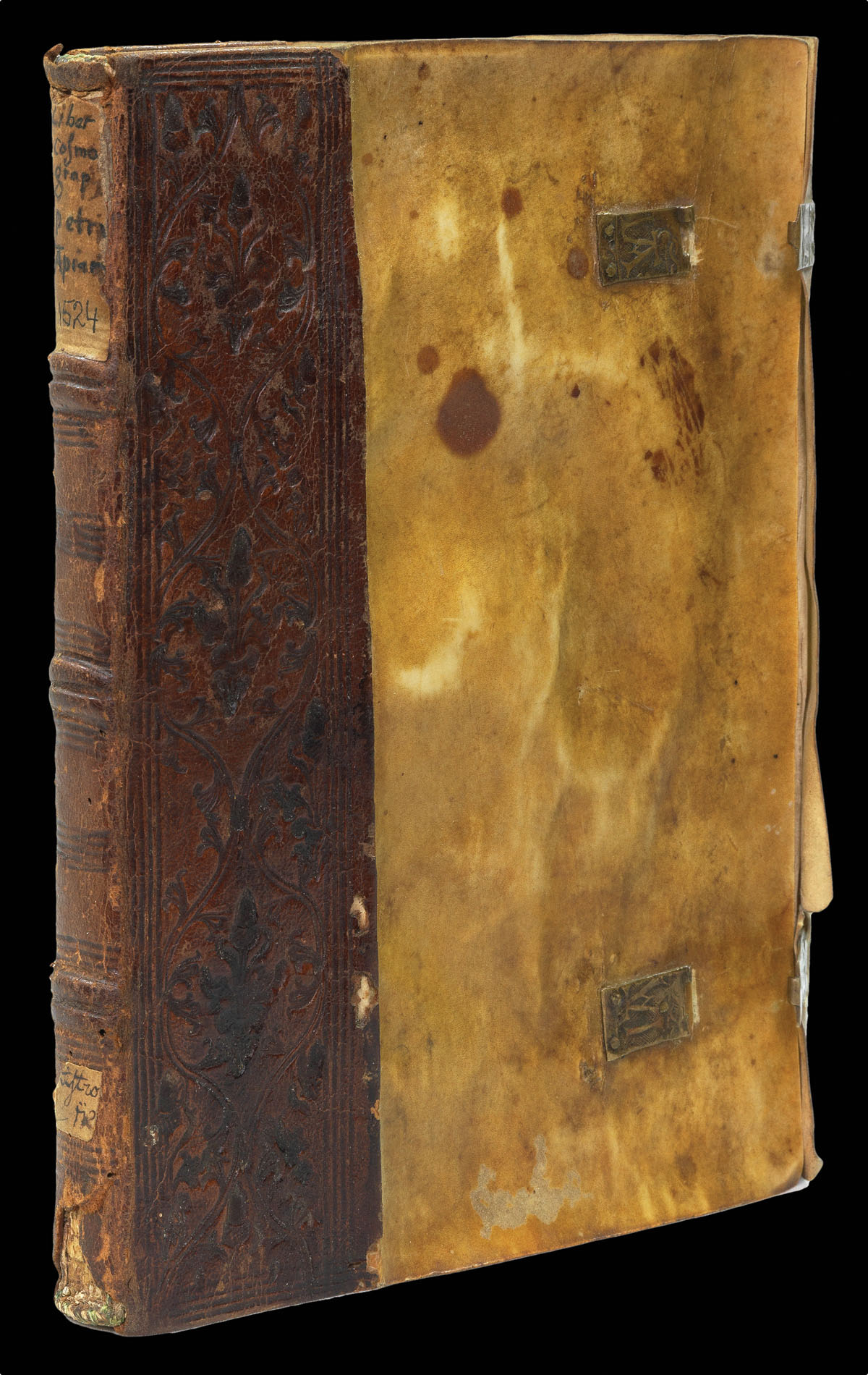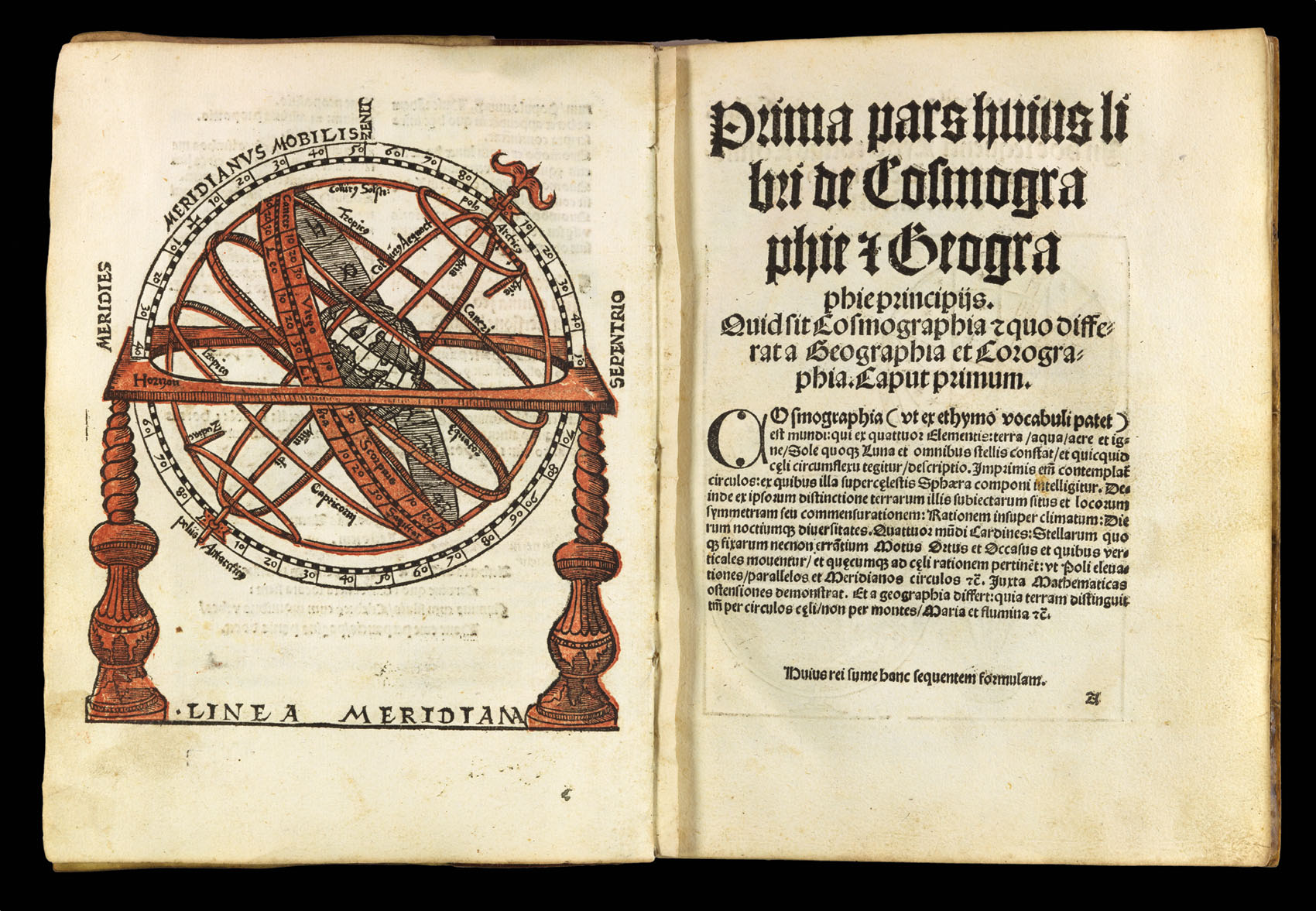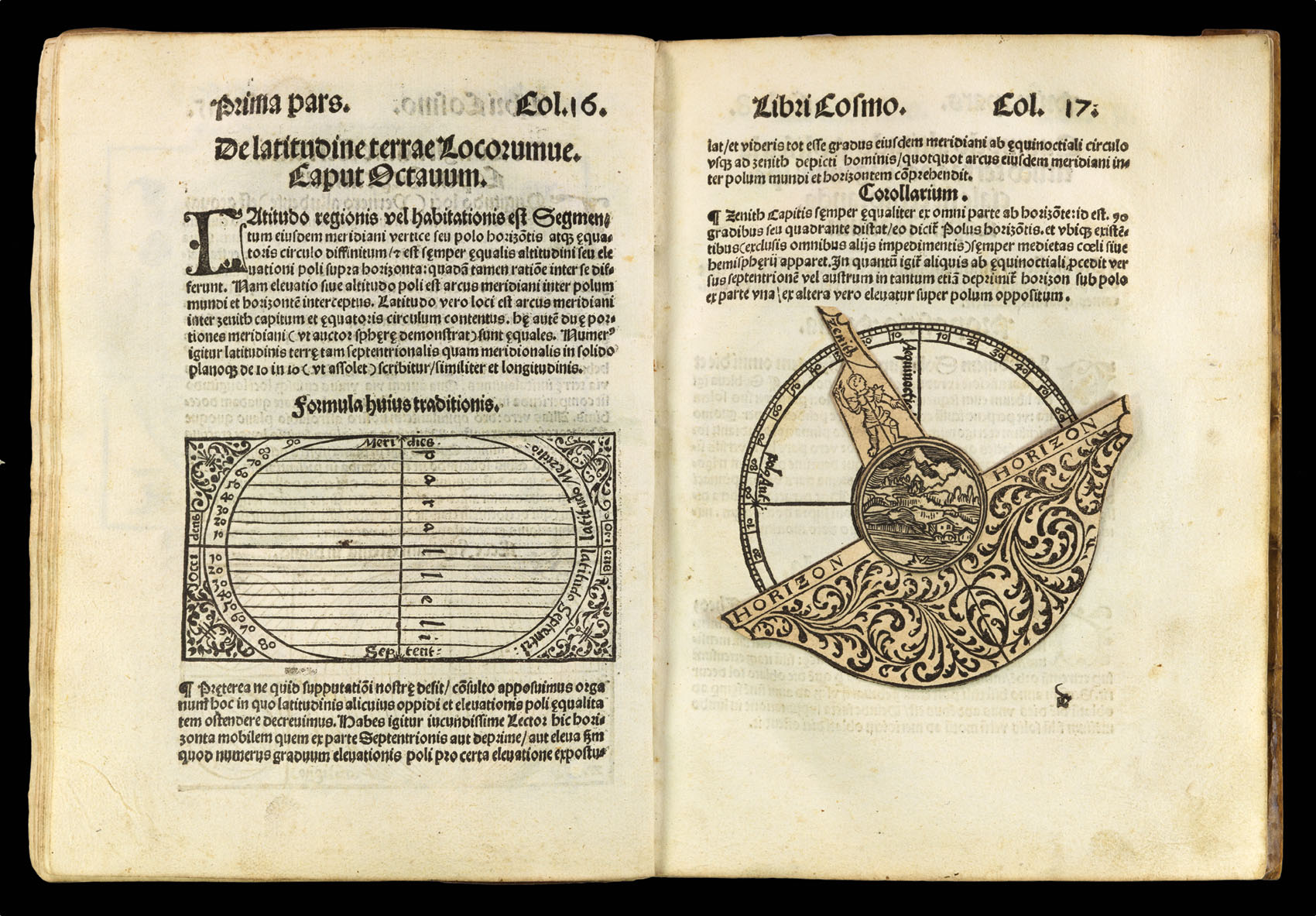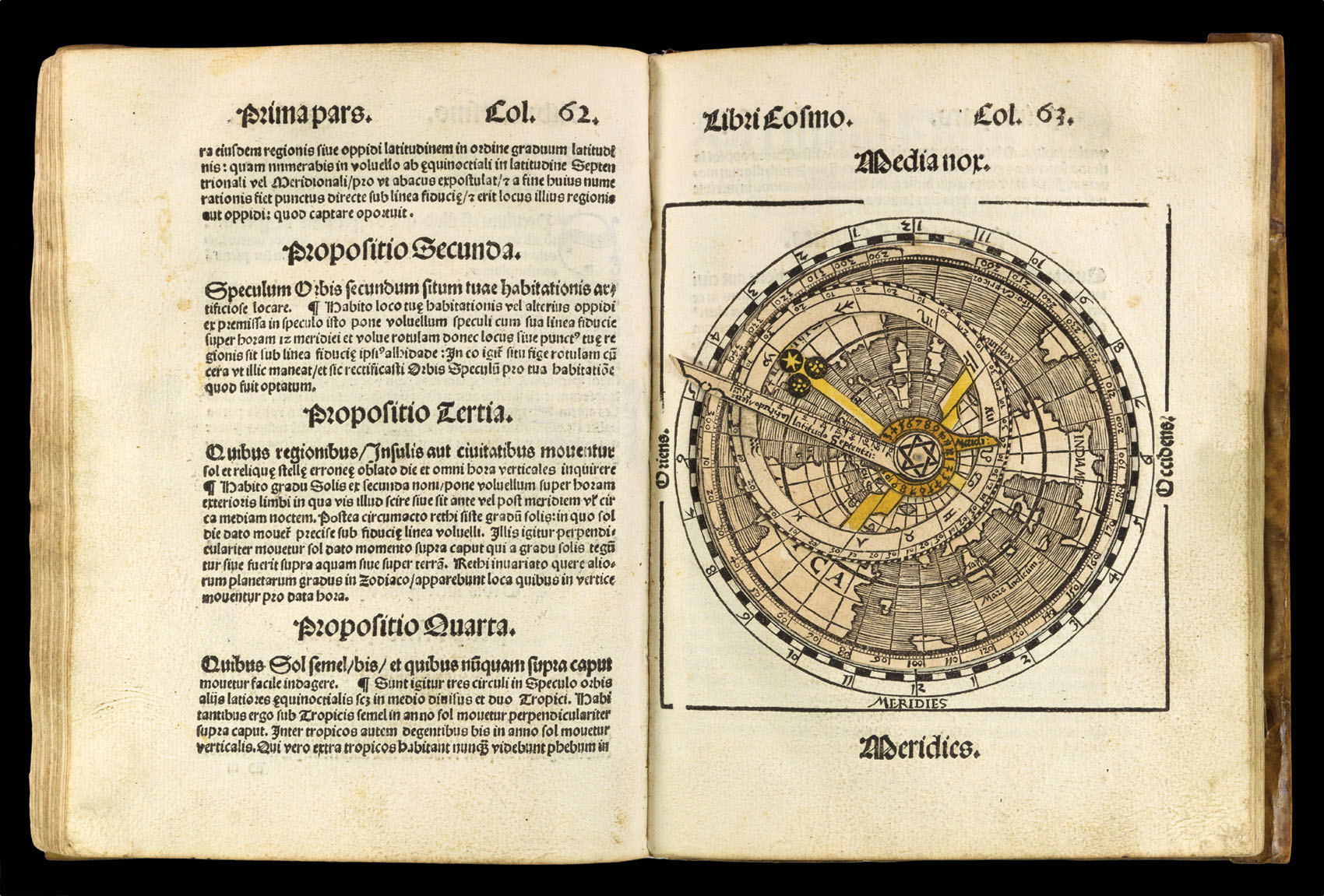Cosmographicus liber.
Landshut,
Johann Weyssenburger,
1524
First edition, quarto (197 by 152mm), title with large woodcut globe, arms of the Cardinal Archbishop of Salzburg on verso, full-page woodcut on p. [viii], the first quire printed in red and black, the title coloured by a contemporary hand, profusely illustrated with woodcuts depicting globes, scientific instruments, astronomical and geographical maps and diagrams, etc., the illustrations on pages (Cols.) 17, 24, 50, 63 and lv with well-preserved volvelles; two unused volvelles are attached to the final printed leaf, being parts of the illustration of Apianus's 'Instrumentum syderale', title slightly soiled and with wormhole in upper margin, contemporary South German binding of limp vellum, blind-stamped calf spine, worn, 'Maria' stamped catches, broken.
Collation: [pi]4"; A-M4; 4: 56 leaves, 4 blank; with many mis-signings. A lv-M4v paginated (as "Col.") 2-104.
Collation: [pi]4"; A-M4; 4: 56 leaves, 4 blank; with many mis-signings. A lv-M4v paginated (as "Col.") 2-104.
11837
notes:
Petrus Apianus (1495-1552) was born in Saxony as Peter Bienewitz. He studied at the University of Leipzig from 1516 to 1519, where he took a Latinised version of his German name: Petrus Apianus. In 1520 he moved to Vienna, where he was part of the second Vienna school of cartography, and produced his first world map there. He then moved again to Landshut, where he produced the 'Cosmographicus liber' in 1524, his first major work.
Based on the theories of Ptolemy...
Based on the theories of Ptolemy...
bibliography:
Harrisse 127; Robert Karrow, Mapmakers of the sixteenth century and their maps (Chicago: Speculum Orbis Press for The Newberry Library, 1993), 53; Fernand van Ortroy, Bibliographie de l'Oeuvre de Pierre Apian (Amsterdam: Meridian, 1963), 22; Sabin 1738; Margaret Bingham Stillwell, The Awakening Interest in Science during the First Century of Printing, 1450-1550 (New York: Bibliographical Society of America, 1970), 136; Bibliotheca Americana: Catalogue of the John Carter Brown Library, vol.1 (Providence: Brown University Press), 89.
provenance:
Provenance:
1. In Latin, 1555, gift of the book by a Prior Erasmus, ownership inscriptions on front paste-down.
2. In Latin, c. 1600, monastery of Chemnitz (now Karl-Marx-Stadt), ownership inscriptions on front paste-down.
3. In German, signed by Christof Halla recording purchase of the book in 1653 from a named friend, ownership inscriptions to title.
4. Honeyman sale (Sotheby's London, 30 October 1978, lot 99, £2,600).
5. Otto Schäfer Stiftung, Schweinfurt, Germany.
1. In Latin, 1555, gift of the book by a Prior Erasmus, ownership inscriptions on front paste-down.
2. In Latin, c. 1600, monastery of Chemnitz (now Karl-Marx-Stadt), ownership inscriptions on front paste-down.
3. In German, signed by Christof Halla recording purchase of the book in 1653 from a named friend, ownership inscriptions to title.
4. Honeyman sale (Sotheby's London, 30 October 1978, lot 99, £2,600).
5. Otto Schäfer Stiftung, Schweinfurt, Germany.






